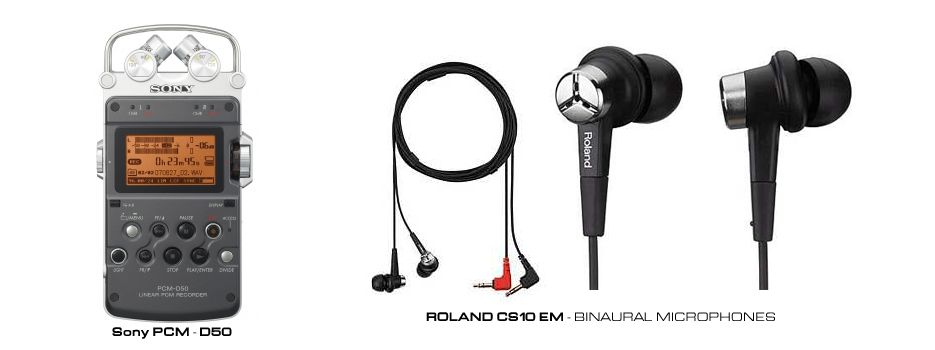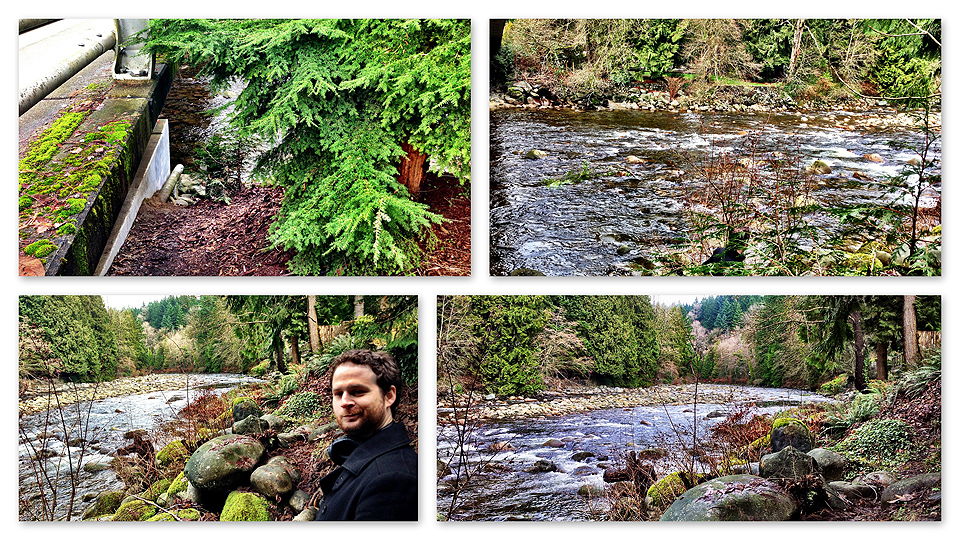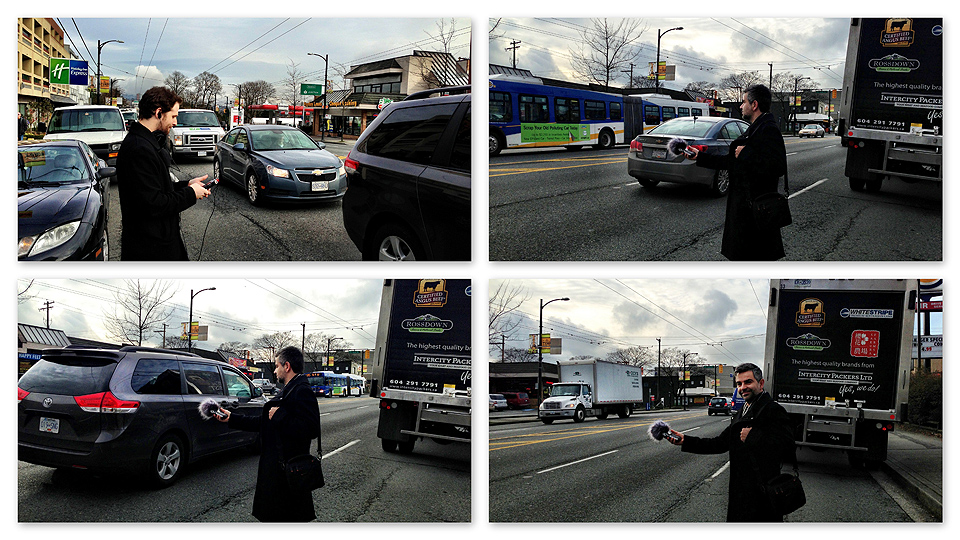Portable Recorders 2 – Binaural Mic Tests: Sony PCM-D50 Vs. Roland CS10EM
I’ve read the microphones on a Sony PCM-D50 Portable recorder are not great [but better than the microphones in the Marantz PMD-661 – see blog on THAT!] and I was wondering exactly how “not great” they might be. Sound Designer Gordon McGladdery [aka A Shell In The Pit] mentioned something about binaural microphone recordings and I jumped at the chance to do a comparison recording. Plus I thought it would be a good excuse to hang out with Gordon 🙂

River Ambience Recordings in North Vancouver
We drove around until we found a location near Deep Cove with a large stream, away from busy car traffic. This was a good opportunity to record ambience with a lot of detailed information to highlight transient response in the test microphones. We recorded at 96KHz/24bit and you can download the raw files (well not exactly raw – flac) at the bottom of this post.

Sony Recorder with Internal Mics @ 120 degrees Vs Binaural Mics (no EQ, files have been volume normalized)
Sony Internal Mic
Binaural Mic Into Sony
Staggering difference.
Let’s compare what happens when we frequency match and normalize the Sony Internal Mics to the Binaural Microphone frequency curve. This will tell us how well the transients are being picked up. Here is the curve that matched frequencies:

Binaural Mic Into Sony
Sony Internal Mic Frequency Matched to Binaural
Traffic Drive-Bys in East Vancouver
For this test we used two different recorders so we can compare the exact recording. Because we used 2 different recording devices simultaneously (Tascam DR-05 and Sony PCM-D50) we expected some difference in the mic preamps and D/A converters. It’s not 100% scientific but it’s a useful test.

Here are the frequency matched recordings (Sony Mic matched to Binaural).

Binaural Mic Into Tascam
Sony Mics frequency matched to Tascam +Binaural Frequency curve
And here are all the raw files (96KHz/24bit) for your own listening tests. A BIG thanks to Gordon McGladdery for helping out on this!

